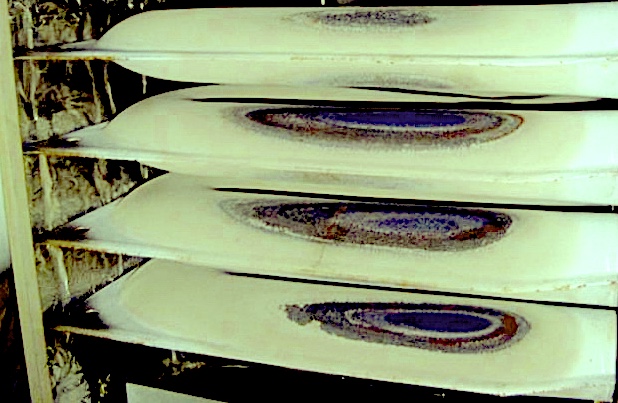Understanding Why Furnaces Cause Carbon Monoxide

Furnaces cause carbon monoxide leaks often because of cracks in heat exchangers. Shown above, a heat exchanger looks like a radiator that is inside your furnace.
After a carbon monoxide event, the first area of inquiry is often to look at the heat exchangers in a furnace of other fuel burning appliance. A heat exchanger is a set of tubes that are looped through the hot air flow inside your furnace for the purpose of heating air. The heat exchanger exchanges the heat in the exhaust of the furnaces combustion into the clean air that will circulate throughout the room air (ambient air) of the building. The air from combustion would be poisonous. The ambient air is supposed to be free of exhaust by-products, including carbon monoxide. As shown above, the heat exchanger looks like an old hot water heat radiator, except it is inside the furnace, not in the room. (A hot water heat radiator is also technically a different type of heat exchanger.)
However, at times furnaces cause carbon monoxide poisoning even when the heat exchangers are intact. Such can happen as a result of insufficient combustion air for the furnace to burn clean or as a result of some problem with the exhaust system for the furnace.
Furnaces Cause Carbon Monoxide when Outside Air is Obstructed
Some gas appliances are designed to burn with room air, without exhaust. Such is possible because natural gas (or methane) is designed to burn clean, meaning all of the carbon in the fuel is converted to the harmless carbon dioxide. A kitchen stove or a even a candle is a good example.
The proviso is that there must be enough oxygen in the room. Even a kitchen stove if it has too much fuel burned or left on for too long, can use up the available oxygen. When the room is short of oxygen incomplete combustion of the fuel occurs. With incomplete combustion, instead of CO2 as a by-product, carbon monoxide CO is formed.
Where CO can occasionally occur from a kitchen stove, when a furnace or hot water heater has insufficient oxygen, the poisoning happens much faster and likely in larger quantities. In such cases,furnaces cause carbon monoxide poisoning. Thus, in buildings where the oxygen needs of the fuel burning appliances exceed what is in the room air, fresh air intakes are provided. One of the biggest culprits in carbon monoxide poisoning cases is obstruction of outside air intakes. This can happen even with the accumulation of leaves and other biological debris on such intakes.
Furnaces Cause Carbon Monoxide when Exhaust Pipes Break
All exhaust air from a furnace is designed to be exhausted outside. If there is a breach or break in the exhaust venting from a furnace, carbon monoxide poisoning is likely to occur. Yet, failure to have sufficient outside combustion air often contributes to this problem as well. In theory, just because a furnace begins to create carbon monoxide, doesn’t necessarily mean that the CO will get into the room air. If the exhaust is sealed, all of the CO should get outside. Yet when insufficient oxygen is in a building, there is often a suction that is created which actually reverses the flow of the exhaust gases outside. In addition to CO in the exhaust, there is also water vapor. When the exhaust gases stall on the way out of the chimney, the water vapor in the gas will condense. Water in exhaust pipes cause corrosion. Corrosion in pipes eventually leads to a break or a hole in the pipe. For more on negative pressure problems causing carbon monoxide poisoning, click here.
